Flat Ceiling
The simplest type of ceiling is the conventional flat ceiling with a seamless surface, usually finished with drywall and painted.
Pros
- Easy to install
Cons
- Not very interesting to look at
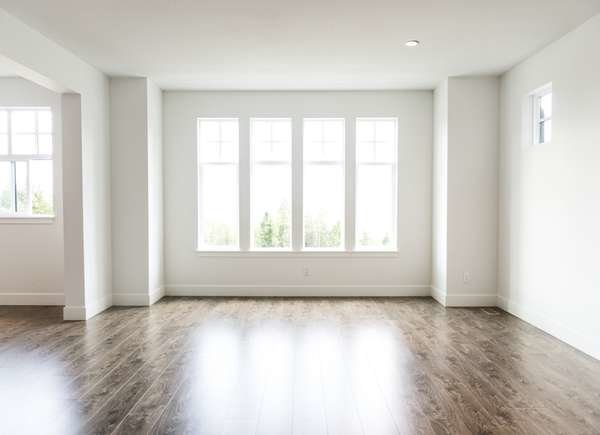
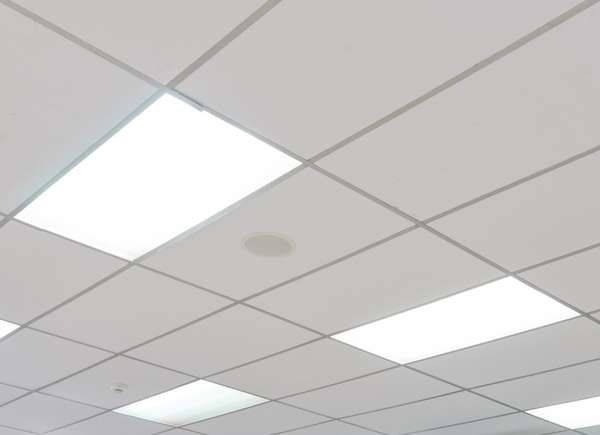
Drop Ceiling
Also known as a suspended or false ceiling, this second structure is suspended below the main ceiling. It is made from vinyl tiles, typically 2x2 or 2x4 feet, and can be plain white or decorative, but they’re more functional than fashionable. The main purpose of installing a drop ceiling is to hide unsightly mechanical and electrical systems like ductwork, sprinkler systems, etc., often in a basement. This type of ceiling requires precision and expertise to work around ductwork, pipes, and wiring properly.
Pros
- Hides unsightly ductwork, pipes, wiring, etc.
- Reduces noise from water pipes and floor above
Cons
- Not typically a DIY job
- Professional installation costs approximately $1,500 for a 10x12 room
Tray Ceiling
The perimeter of this ceiling is at least nine feet high and flat, while a central section rises about a foot higher. These ceilings provide extra height and architectural interest without too much extra cost. Installing a tray ceiling can cost between $3 to $5 per square foot, depending on home location, room size, and the amount of work required.
Pros
- Increase ceiling height and architectural interest
Cons
- Extra cost
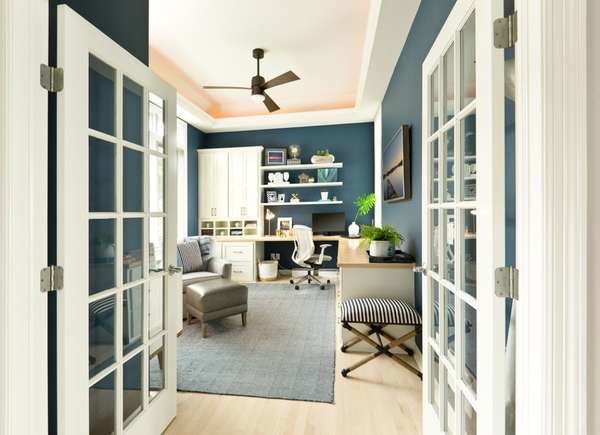
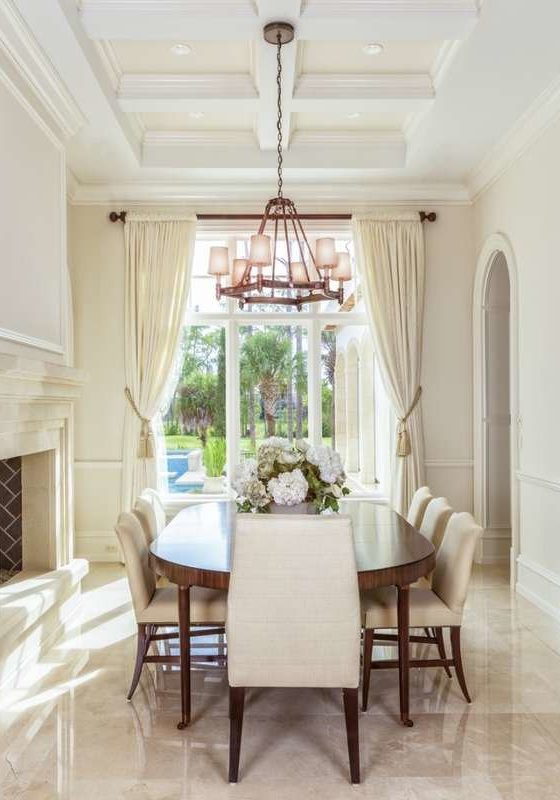
Coffered Ceiling
Coffered ceilings feature three-dimensional grooved wood or fibreboard panels that add depth and character. First developped in ancient Greece, they are now usually found in grand public buildings and large homes because they need a minimum ceiling height of nine feet. These ceilings require expert carpentry skills and a specialized installation process, raising the cost to about $25 per square foot, depending on materials and carving details. If you are a carpenter yourself, you can DIY a coffered ceiling for between $250 and $800, depending on room size and material.
Pros
- Dramatic and striking look
Cons
- Very expensive to install
Coved Ceiling
The special feature of coved ceilings are their rounded edges, different from the standard sharp corners of most ceilings. This softness can create a cozy feeling in a living room or family room and can be combined with a tray ceiling to make a space feel taller and airier. To install a coved ceiling, you can hire a professional and pay extra costs, or you can add DIY curves to a 12-by-12-foot room with a kit that contains radius cove pieces, 90-degree corners, and 45-degree inside corners.
Pros
- Makes a room feel cozier
Cons
- Extra cost
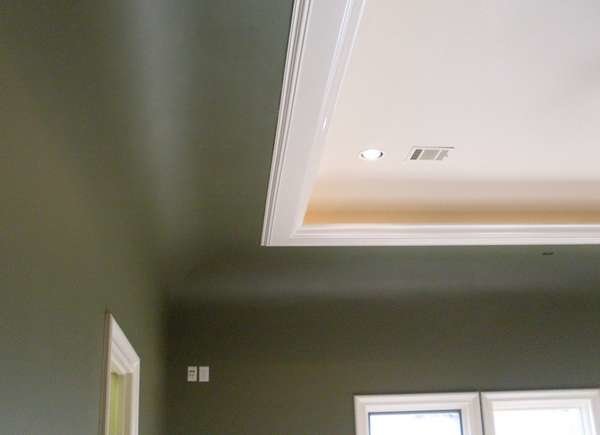
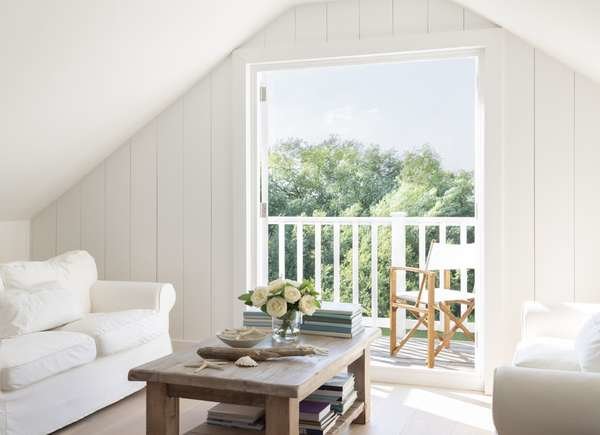
Sloped Ceiling
Commonly found in houses that have a pitched roof (such as Tudors), these ceilings rise at an angle, following the roofline where the two sides of the roof meet at a peak. As a result, they create cozy nooks in attic levels and increase the airiness of living rooms with vaulted ceilings. If you want to create a sloped ceiling in a renovation or addition, be sure to check local building codes about how low a sloped ceiling can be before the space underneath it no longer counts as "living space." Finished sloped ceilings can be covered in drywall or left with beams exposed. Prices vary depending on where you live.
Pros
- Adds coziness and airiness to a room
Cons
- Reduces the living space in a room
Vaulted Ceiling
A vaulted ceiling features a high central arch, usually built out of wooden scaffolding and finished with wood planks, drywall, or tile. The five main types of vaulted ceiling are cathedral (equal sloping sides), barrel (single curved arch), groin (two barrel vaults meeting at 90-degree angles), cloister (arch rises from the middle of each wall), and domed (central circular arch). These ceilings are best suited to very large homes. A 12-foot vaulted ceiling in a 20-by-20-foot room will cost between $18,000 and $25,000.
Pros
- Creates architectural interest
Cons
- Expensive to install and heat/cool
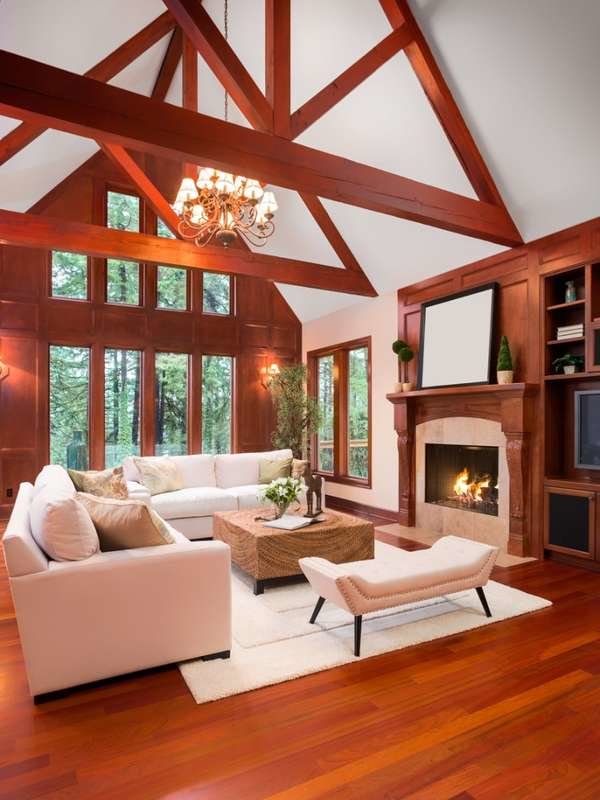
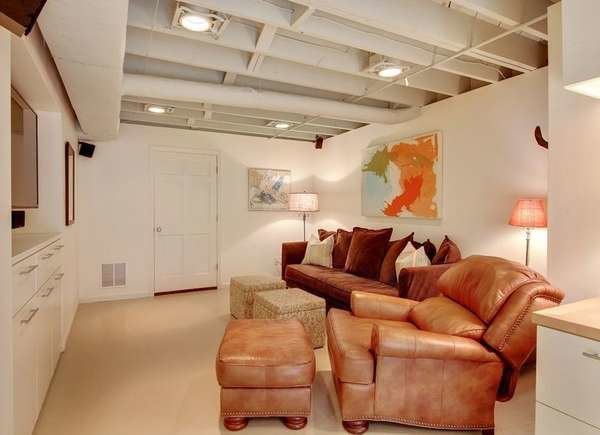
Exposed Ceiling
Exposed ceilings are left intentionally unfinished, though beams, pipes, and ductwork may be painted all one colour. This is a popular choice in modern industrial interiors and is an inexpensive option, but these rooms are typically noisier and less insulated.
Pros
- Cheapest ceiling option
Cons
- More expensive to heat and cool; no noise barrier
Beamed Ceiling
Usually found in cabins, chalets, and other homes built of timber with post-and-lintel construction, a beamed ceiling has visible timber beams that evoke rustic charm. New houses today are typically built of steel frames with lightweight fibre and cement roof-boards, which are not very suitable for beamed ceilings. If you are building a new home and want beamed ceilings, expect to pay 10 to 15 percent more for your home’s ceiling construction. You can also consider installing decorative beams made of wood, fibreglass, or polyurethane.
Pros
- Creates architectural interest
Cons
- Less insulation and energy-efficient as drywall ceilings
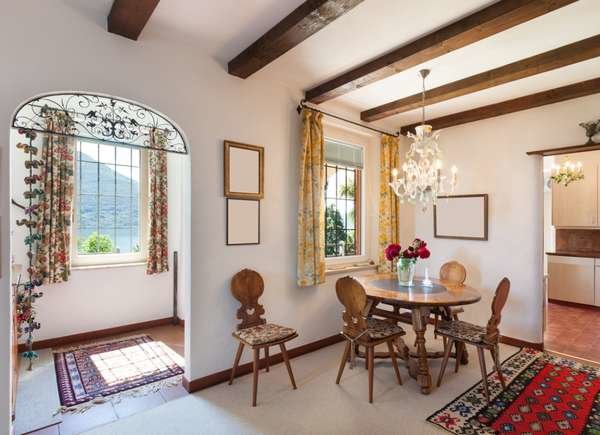
Textured Ceiling
Ceiling textures (“popcorn ceilings”) are styles of drywall finishes that differ from smooth ceilings. Paint or spray is used to create an irregular or bumpy pattern. Textured ceilings have several advantages over smooth ceilings: they hide imperfections and are generally easier and cheaper to make (they usually require two layers of paint, instead of three), and deaden noise.
Pros
- Hide imperfections
- Easier and cheaper to make
- Deaden noise
Cons
- More difficult to clean and repair than smooth ceilings
- Don’t reflect as much light into the room
- Not ideal for bathrooms and kitchens
Skip Trowel
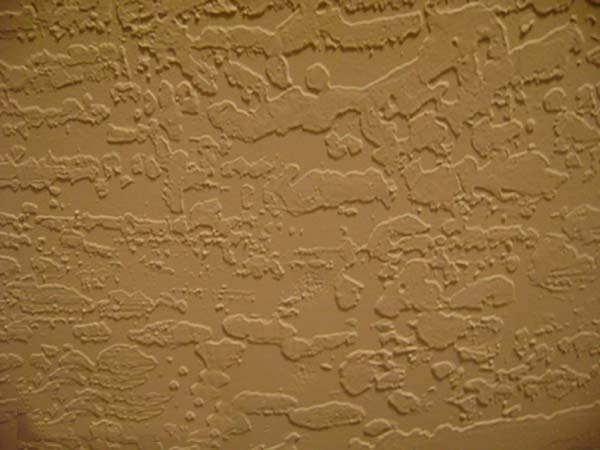
Orange Peel
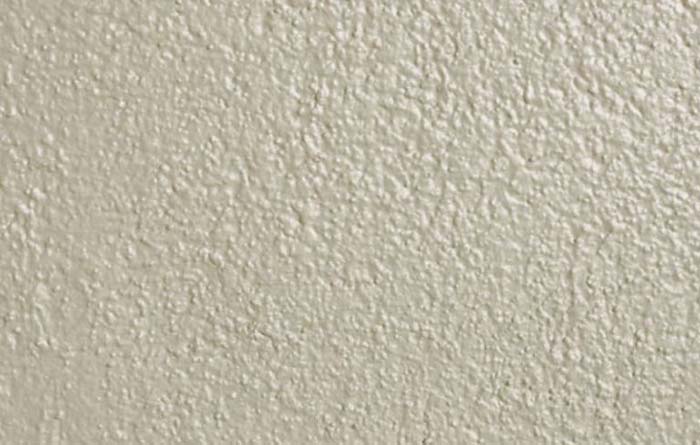
Knockdown
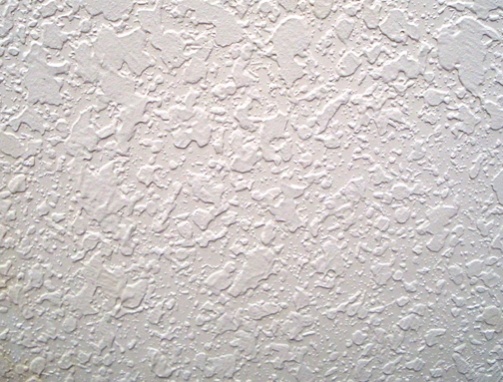
Stippled
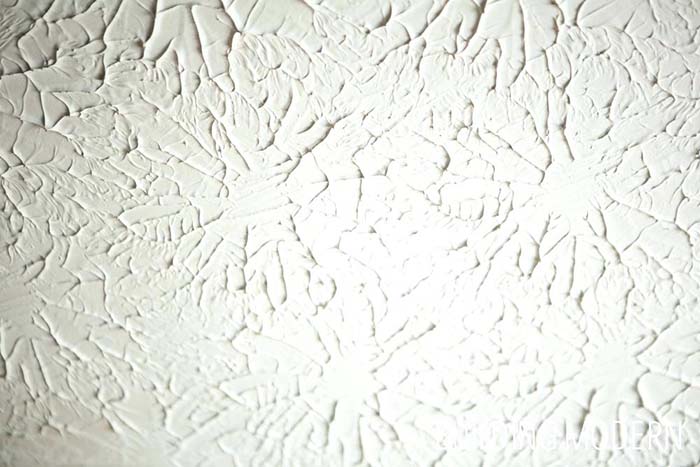
Swirl
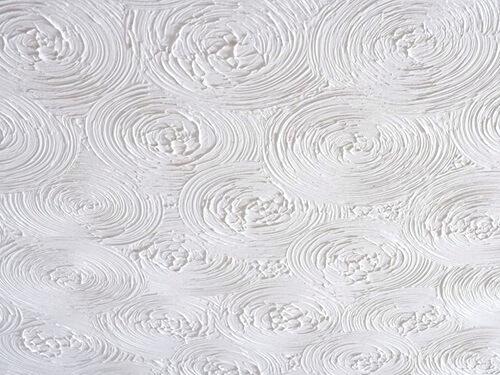
Lace
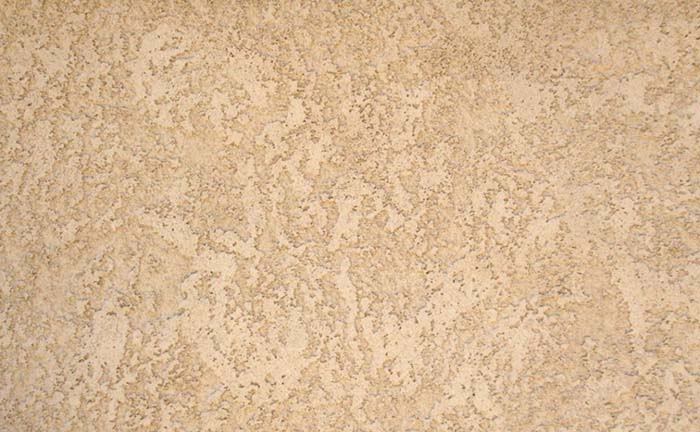
Spray Sand
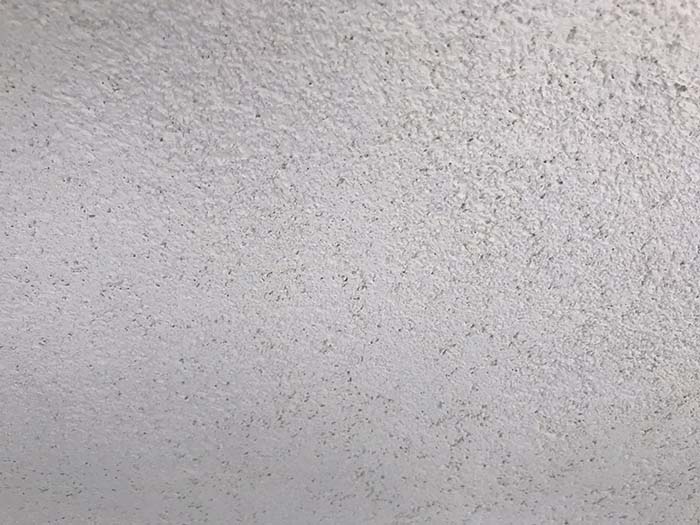
Stomp
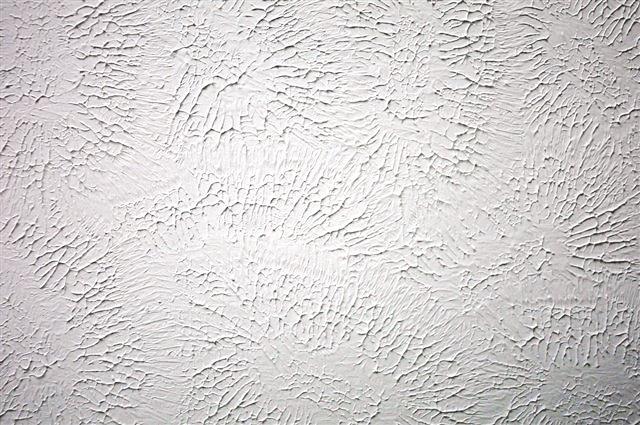
Popcorn
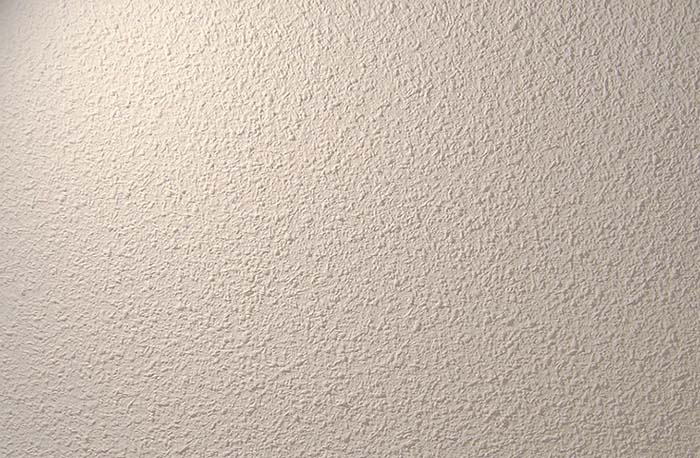
The House
Explore the different components of the house.

